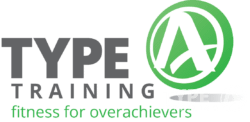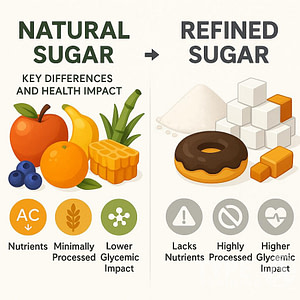Kraft Heinz has removed Lunchables from the National School Lunch Program. This decision has sparked discussions about school nutrition and corporate responsibility. The company cited lack of demand as the primary reason for withdrawing the product from public school menus.
This move comes after the packaged lunch brand faced scrutiny over its nutritional content.
You might wonder how this change will affect students who rely on school meals. The removal of Lunchables from the program means schools will need to find alternative options to provide balanced and appealing lunches.
Popular posts:
This decision also raises questions about the future of convenience foods in educational settings and the ongoing challenge of offering nutritious meals that children enjoy.
Key Takeaways
- Kraft Heinz pulled Lunchables from school lunch programs due to low demand.
- The decision follows concerns about high sodium levels in Lunchables.
- Schools will need to find alternative meal options for students.
The Business Decision Behind the Withdrawal
Kraft Heinz’s removal of Lunchables from school menus reflects shifting market dynamics and consumer preferences. The company’s strategy aims to refocus on more profitable sales channels and product offerings.
Impact on Kraft Heinz Markets
Kraft Heinz pulled Lunchables from the National School Lunch Program due to insufficient demand. This decision affects markets serving low-income school children across the U.S. The company described the business impact as negligible, with school-designed meal sales representing less than 1% of overall Lunchables sales.
You might wonder about the nutritional concerns surrounding Lunchables. Some reports suggest the products contained high sodium levels and potentially concerning amounts of lead and phthalates. These factors may have influenced schools’ purchasing decisions.
Lunchables Sales Trends
Despite withdrawing from school menus, Lunchables remains a popular packaged lunch brand in retail markets. Kraft Heinz continues to see strong demand for Lunchables outside of the school lunch program.
Sales trends indicate that consumers still prefer the convenience of pre-packaged lunch options. However, the company’s decision suggests a shift in focus towards more profitable retail channels.
You’ll notice that Kraft Heinz is adapting its strategy to align with changing consumer preferences and market demands.
Changing Sales Channels
Kraft Heinz is redirecting its efforts to more lucrative sales channels for Lunchables. By exiting the school lunch program, the company can concentrate on retail and other direct-to-consumer channels.
This shift allows Kraft Heinz to:
- Focus on higher-margin sales opportunities
- Adapt products to meet evolving consumer preferences
- Invest in marketing and product development for retail markets
You’ll likely see Lunchables continuing to evolve in grocery stores and other retail outlets, as Kraft Heinz aims to maintain its strong position in the packaged lunch market.
Nutritional and Safety Concerns
Lunchables have faced scrutiny for their nutritional content and potential health risks. Consumer groups have raised alarms about excessive sodium and the presence of harmful substances.
Health Risks from High Sodium Levels
Lunchables contain high levels of sodium, which can be detrimental to children’s health. A single serving often exceeds recommended daily limits for kids.
Excess sodium intake is linked to:
- Increased
blood pressure - Higher risk of heart disease
- Potential kidney problems
You should be aware that consistently high sodium consumption in childhood can lead to long-term health issues. Some Lunchables varieties contain up to 930 mg of sodium per serving, nearly half the daily recommended limit for children.
Presence of Harmful Chemicals and Heavy Metals
Consumer Reports found concerning levels of harmful substances in Lunchables:
- Cadmium: A toxic heavy metal linked to kidney damage and bone fragility
- Phthalates: Chemicals that can disrupt hormones and affect development
These contaminants pose serious health risks, especially for growing children. Long-term exposure may lead to developmental issues and increased cancer risk.
Food safety standards for school lunches are stricter than those for retail products. This discrepancy raised concerns about allowing Lunchables in school cafeterias.
Consumer Reports
Consumer Reports played a significant role in highlighting concerns about Lunchables. In April 2024, their tests revealed potentially troubling levels of lead, phthalates, and sodium in various Lunchables kits sold in supermarkets.
While the organization didn’t test the school lunch versions, they analyzed their nutritional information. They found these versions contained even more sodium than their store-bought counterparts.
Concerned about these findings, Consumer Reports took action. They petitioned the Department of Agriculture, urging stricter standards for the school lunch program. Their goal was to prevent highly processed, sodium-heavy products like Lunchables from being offered to students.
Brian Ronholm, Consumer Reports’ director of food policy, emphasized the importance of healthier options in schools. He pointed out that products with high sodium and heavy metals shouldn’t be part of school meals.
It’s worth noting that Kraft Heinz stated Consumer Reports’ tests didn’t influence their decision to remove Lunchables from school menus. However, the company’s CEO acknowledged the impact of “negative publicity” on Lunchables sales during an earnings call.
You might be interested to know that Consumer Reports continues to advocate for stricter food standards in schools, aiming to ensure students have access to healthier meal options.
Reactions and Impact on Public Perception
Kraft Heinz’s decision to remove Lunchables from school menus sparked widespread reactions. The move highlighted growing concerns about school nutrition and prompted discussions on the need for healthier options in cafeterias.
Media Coverage and Negative Publicity
Kraft Heinz’s announcement to pull Lunchables from the National School Lunch Program received significant media attention. You might have noticed headlines questioning the company’s motives and the nutritional value of their products.
Many news outlets focused on the low demand for Lunchables in schools, raising questions about their suitability for young students. This negative publicity led some parents and educators to reconsider the role of packaged meals in children’s diets.
The company faced criticism for initially modifying Lunchables to meet USDA standards, only to withdraw them shortly after. This back-and-forth approach left some questioning Kraft Heinz’s commitment to school nutrition.
Demand for Healthier Options in Schools
The removal of Lunchables from school menus highlighted the growing push for healthier meal options in educational institutions. You may have noticed increased discussions about the nutritional content of school lunches.
School districts across the country began exploring alternative meal options that better align with dietary guidelines. Many schools emphasized fresh fruits, vegetables, and whole grains in their menus.
Parents and nutrition advocates voiced support for these changes, urging schools to prioritize balanced meals over convenience foods. This shift in public perception encouraged food manufacturers to develop healthier products tailored for school meal programs.
The incident prompted a broader conversation about the role of major food companies in shaping children’s eating habits through school partnerships.
Alternatives and Future of School Lunch Programs
As Lunchables exit school cafeterias, you may wonder what’s next for school meals. The USDA continues to oversee the National School Lunch Program, focusing on nutritious options for students.
Schools are exploring new ways to provide balanced meals. Some are partnering with local farms to offer fresh produce. Others are introducing meal kits that students can assemble, promoting engagement with their food.
Protein remains a key component of school lunches. You’ll see more plant-based options alongside traditional choices. Schools are also incorporating whole grains and reducing added sugars in their menus.
For low-income school children, free and reduced-price meals will continue to be a priority. The focus is on providing nutritious options that are both appealing and affordable.
Packaged meals aren’t disappearing entirely. You’ll see new versions designed to meet stricter nutritional guidelines. These may include redesigned lunch kits with more vegetables and lean proteins.
While favorites like Extra Cheesy Pizza Lunchables may not be on the menu, schools are working to create healthier versions of popular items. The goal is to balance nutrition with flavors that students enjoy.
Frequently Asked Questions
Kraft Heinz’s decision to remove Lunchables from public school menus has raised several important questions. The move impacts school meal programs and has prompted reactions from various stakeholders.
What prompted the decision by Kraft Heinz to remove Lunchables from public school menus?
Kraft Heinz removed Lunchables from the National School Lunch Program due to low demand. The company found that there was insufficient interest in the school-specific versions of Lunchables they had developed.
This decision came after Kraft Heinz had initially modified the products to meet USDA standards for school meals.
Are there specific concerns that led to the discontinuation of Lunchables in schools?
While low demand was the primary reason cited by Kraft Heinz, concerns about high sodium levels in Lunchables were also raised by Consumer Reports earlier in the year.
These nutritional concerns may have contributed to the lack of interest from schools and parents in including Lunchables in school lunch programs.
How will Kraft Heinz’s decision to pull Lunchables affect school meal programs?
The removal of Lunchables from school menus is likely to have a minimal impact on most school meal programs. Many schools had not widely adopted the product due to its recent introduction to the National School Lunch Program.
Schools that did offer Lunchables will need to find alternative options to replace these items in their meal plans.
What alternatives is Kraft Heinz providing to Lunchables for public school cafeterias?
Kraft Heinz has not announced any specific alternatives to replace Lunchables in school cafeterias. The company’s focus appears to be on its retail Lunchables products rather than developing new options for schools.
Schools will likely need to seek alternatives from other food suppliers or adjust their existing meal offerings.
Has there been a reaction from schools or parents to the removal of Lunchables from menus?
While specific reactions from schools and parents have not been widely reported, some nutrition advocates have expressed approval of the decision.
These advocates view the removal of Lunchables as a positive step towards providing healthier meal options in schools.
Will the removal of Lunchables from public school menus impact Kraft Heinz financially?
The financial impact on Kraft Heinz is expected to be minimal.
The company stated that school-specific Lunchables had an insignificant impact on the brand’s overall performance.
Kraft Heinz continues to focus on its retail Lunchables products. These products remain popular in stores and are not affected by this decision.












